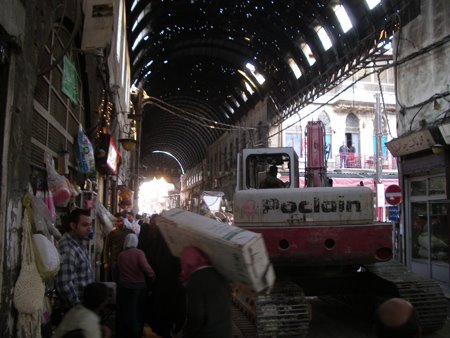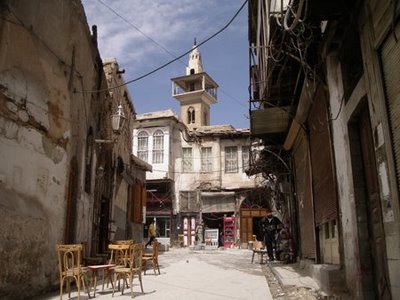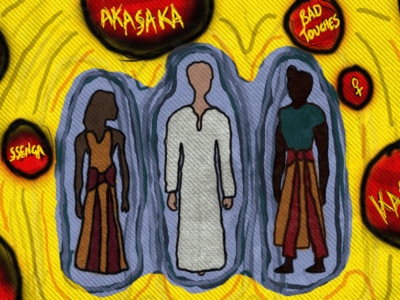Damascus prides itself on being the oldest continuously inhabited city in the world. The history of Damascus goes back well into 8000 BC. In every corner of its ancient alleys there's a taste of every historical era there was to be found. The city that had withstood everything from earthquakes to invasions for nearly 10 millennia, is now crumbling under the threat of… “Modernism“!
Sasa from the Syria News Wire, compiled a series of posts about the situation of the old city of Damascus, and the efforts taking place for the protection and conservation of the city.
Part one of the series deals with last year's plan to tear down the ancient neighborhood of Al-Amara in order to widen the roads outside the walls of the old city. The plan caused an outrage among Syrians, and protests were organized everywhere until they were quietly dropped, for now.
Shopkeepers were furious at the plans, a Facebook and Blogger campaign was launched. That led to a petition. And eventually journalists got wind of the proposals and it made the international news. Then the bombshell – just months before Damascus began its year as Arab Capital of Culture, UNESCO threatened to withdraw Damascus's World Heritage Site status unless more is done to protect the Old City.

Bab al-Faradis, al-Amara, Damascus
The second part is dedicated to the conservation works down in Medhat Pasha street (Street Called Straight), the longest and one of the oldest roads in old Damascus. Sasa aknowledges the importance of the this project as the street has been in shackles for a long time, but laments the ill-planning and the indiscriminate replacement of culturally important parts of the ancient market, like the old Ottoman-time roof, that has a special significance which he explains:
The tin roofs over Medhat Pasha and Souq Al-Hamidiyeh date from the Ottoman refurbishment of the main Souqs. During the insurgency against the French occupation, they were punctured by gunfire. And they've remained that way for almost one hundred years. The shafts of sunlight which pierce into the dark souqs are blindingly beautiful, and a daily reminder of Syria's struggle for independence.
But the centuries-old black Medhat Pasha roof, which was decorated by history, has been replaced by a new white one.

Medhat Pasha Street (Street Called Straight), with its ancient tin roof.
Part three, takes us on an open ended ride into the ancient quarter of Saroujah, a neighborhood that had witnessed some destruction in the past to make space for character-less apartment blocks. The plans to bulldoze the rest of the neighborhood were put on hold, and the decision to go through with them or not is to be taken by the end of this year, says Sasa:
But recently, the organisation which looks after the Old City – and works well with the European Union to do it – has taken over responsibility for Saroujah. So is a change in Saroujah's fortunes in store?
In the past few months, they have re-paved part of the area (with far less inconvenience than in Medhat Pasha).
So does this mean destruction is no longer on the cards?
Documents released by the Old City modernisation authorities show that they are going to make a decision on the future of Saroujah by the end of this year.

Sarouja, Damascus
As the grip of the new corporate culture tightens around the old city, it seems the only way to saving it are the efforts of the civil society, and it has succeeded in reverting the disastrous plans in al-Amara, so there might still be hope at the end of the tunnel.
Photos courtesy of Sasa.







4 comments
Reminds me of what is happening in other parts of the world…
Arab republic of Syria has become a monarchy governed by a dictator as exactly the situation in Egypt after short period.